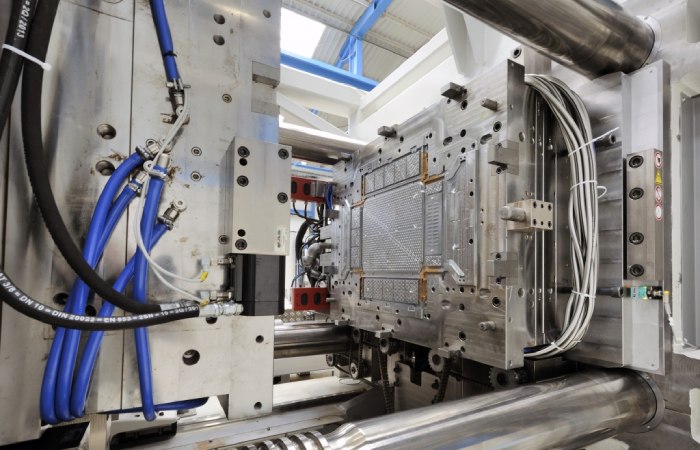Efficiency is a crucial priority for industries seeking to optimize production and reduce costs injection molding. Minimizing waste, particularly scrap material, has gained significant attention in modern manufacturing practices in the healthcare industry. Reducing waste is essential not only for cost management but also for promoting environmental sustainability. Many industries are adopting innovative technologies to streamline production while lowering their overall impact on resources.
One such technology is medical injection molding, which is crucial in minimizing scrap and enhancing production efficiency. This process allows manufacturers to create exact parts with minimal material waste—molds designed to exact specifications ensure that only the necessary amount of material is used. The result is a more efficient production system, helping manufacturers meet economic and environmental goals.
What is Scrap Generation in Manufacturing?
Scrap refers to leftover or unusable material produced during the manufacturing process. If not recycled or reused, this material typically ends up as waste, adding to the cost of production and harming the environment. In traditional manufacturing processes, the amount of scrap can be substantial, affecting the overall efficiency of the operation.
Reducing it is crucial for maintaining profitability and promoting sustainable practices. Many industries are now focusing on methods that ensure minimal waste generation, and plastic molding technology plays a significant role in achieving this. The ability to precisely control material usage and ensure production accuracy helps cut scrap dramatically.
How Injection Molding Reduces Scrap
Injection molding is known for producing high-quality parts with minimal waste. Several factors contribute to its low scrap generation, making it a highly efficient production process.
1. Precision Molding Techniques
One of the main reasons injection molding excels at reducing scrap is the precision involved in the process. Molds designed to exact specifications ensure that only the necessary amount of material is used to create each part. This results in a highly efficient process where waste is minimized immediately.
Moreover, modern molding technology incorporates advanced software and equipment that allow precise control over every aspect of the process. From material flow to pressure and temperature regulation, each step is carefully monitored to avoid overuse of materials or defects in the final product.
2. Recycling Excess Material
While the process itself generates minimal scrap, any excess material can often be recycled and used in future production cycles. For instance, sprues, runners, and defective parts can be ground down and reintroduced into the production process. This reduces the amount of waste and lowers material costs for manufacturers.
Recycling within the process significantly reduces the overall environmental footprint. Manufacturers can maintain efficiency while adhering to eco-friendly practices, which is a growing demand among today’s environmentally conscious people.
3. Optimizing Material Usage
Another factor contributing to lower scrap rates is optimizing material usage. Injection molding allows manufacturers to choose specific materials that best suit the product’s design and functional requirements. These materials are selected to be both durable and cost-effective, ensuring that the correct amount is used without unnecessary excess.
The Benefits of Low-Scrap Generation
Reducing scrap offers several benefits to manufacturers, from cost savings to environmental advantages. Some of the benefits are:
1. Cost Effective Production
Reducing scrap impacts the bottom line. With less material wasted, manufacturers save on raw materials, which can be a significant portion of production expenses. Moreover, recycling leftover materials further reduces costs, making the process more cost-effective.
2. Eco-friendly Manufacturing
Reducing scrap helps promote sustainability in addition to cost savings. Traditional manufacturing processes generate large amounts of waste, which has a significant environmental impact. By minimizing this, manufacturers contribute to reducing landfill waste and conserving natural resources.
3. Boosts Product Quality
Another benefit of low scrap generation is the improvement in product quality. When less material is used, manufacturers can focus on producing more consistent and reliable parts. Precision molding techniques ensure that each product meets exact specifications, reducing the likelihood of defects.
Innovations in Injection Molding to Reduce Scrap

Advances in technology continue to enhance the efficiency of injection molding. New developments in material science, automation, and software have led to even more significant reductions in scrap generation.
1. Smart Molding Systems
Introducing innovative molding systems allows manufacturers to monitor the entire production process in real time. These systems can detect anomalies or inefficiencies and make automatic changes to reduce the likelihood of material waste. This ensures that every production cycle is optimized for minimal scrap.
2. Advanced Materials
Innovations in materials, such as bio-based plastics and high-performance polymers, have also contributed to lower scrap rates. These materials are not only more durable but are also easier to recycle within the molding process. This advancement further enhances sustainability efforts and reduces reliance on non-renewable resources.
Medical injection molding has become vital in the advancement of the healthcare industry due to its efficiency, precision, and low scrap generation. As technological advancements continue to refine molding techniques, reducing scrap will play an even more critical role in the future of manufacturing. Businesses that adopt these methods stand to benefit not only from increased profitability but also from the ability to meet the rising request for eco-friendly production practices.

